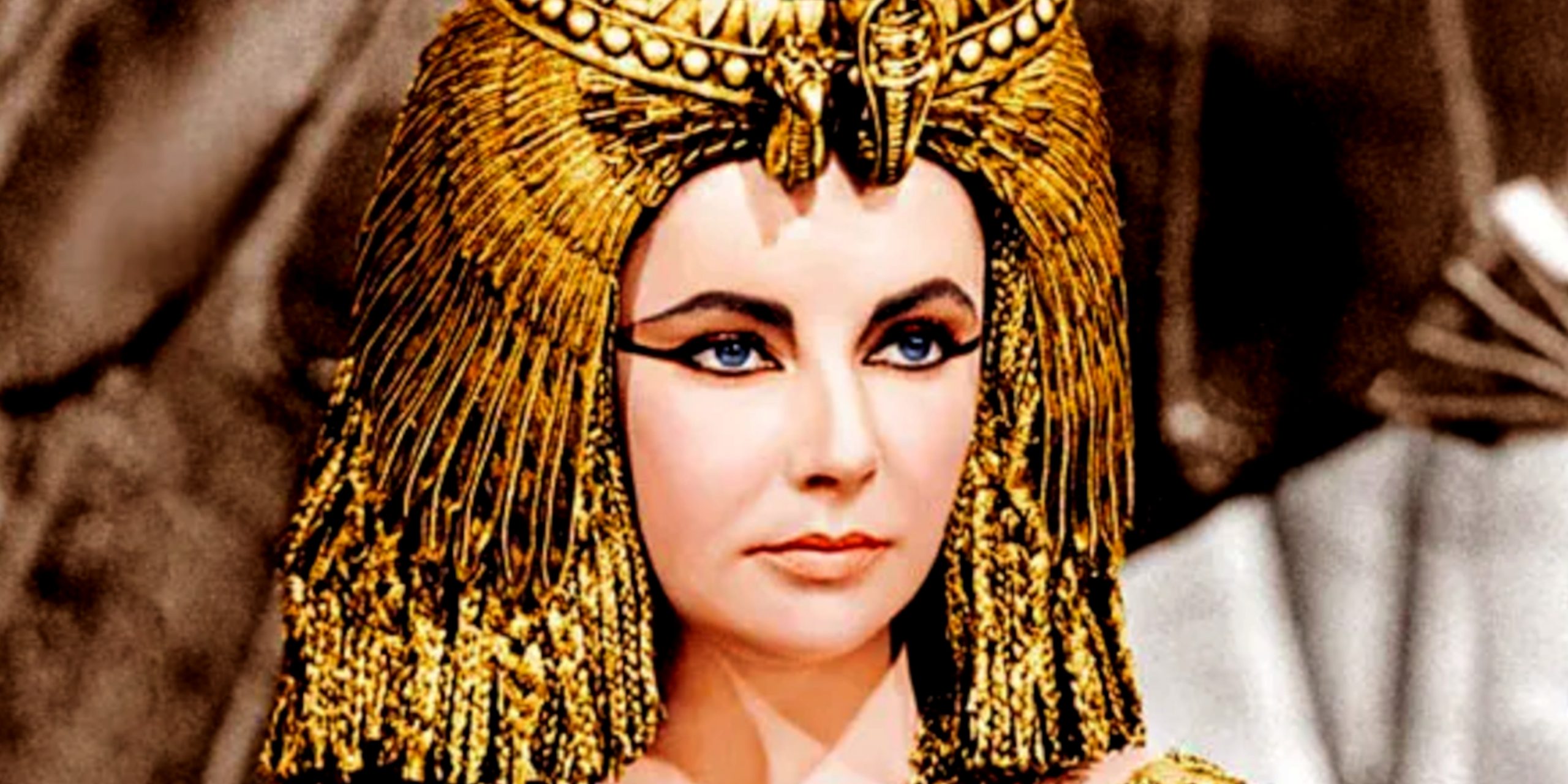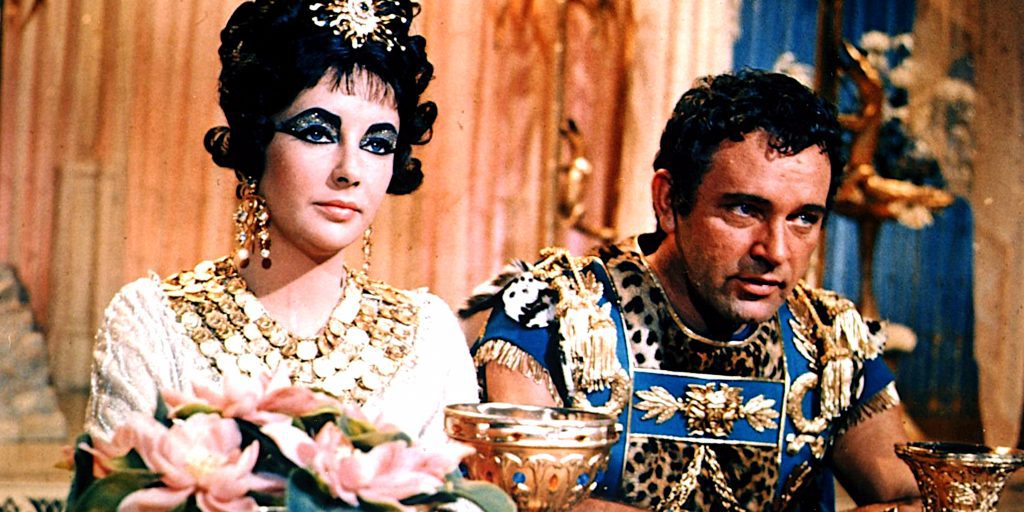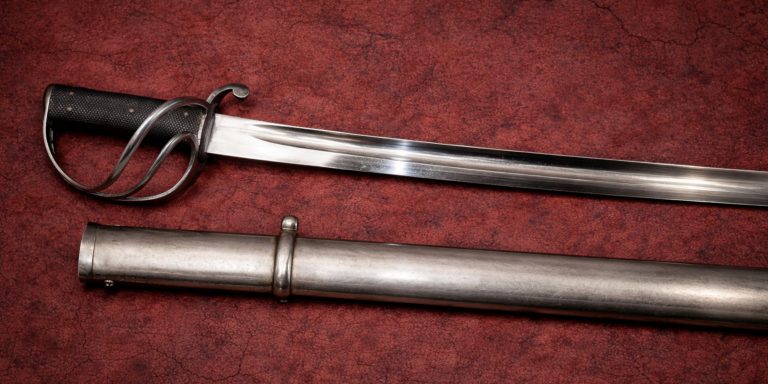
“Nothing like it had ever been made, and nothing like it would ever be attempted again.” That’s what studio executives might have muttered, probably while sweating through their suits, as Cleopatra (1963) spiralled from a glamorous historical epic into one of the most expensive films in history. What was meant to be a grand retelling of the Egyptian queen’s life instead turned into a cautionary tale about excess, ego, and eyeliner.
The Dream Project That Became a Nightmare
It all began with the simple idea of reviving interest in sword-and-sandals epics. Twentieth Century Fox wanted a hit to rival Ben-Hur. What they got was an escalating financial black hole.
Originally budgeted at around $2 million, Cleopatra ballooned to a staggering $44 million by the time it reached cinemas. For context, that’s nearly half a billion in today’s money. The project changed directors, locations, and even lead actors multiple times before Elizabeth Taylor took the throne. Filming began in London but had to be abandoned due to the cold weather and Taylor’s health issues, forcing production to restart in Rome. The abandoned sets alone cost millions.
Elizabeth Taylor: The Queen of Chaos and Charisma
Elizabeth Taylor was the highest-paid actress of her time, signing a contract for a then-unheard-of $1 million. Her Cleopatra wasn’t just regal, she was magnetic, dangerous, and dripping with diamonds. Off-screen, her life became even more dramatic when she fell for her co-star Richard Burton, who played Mark Antony. Their affair dominated headlines, enraged the Vatican, and sold more tabloids than the actual film ever could.
Taylor’s Cleopatra became the visual embodiment of cinematic excess: gold costumes, peacock feathers, 65 costume changes, and eye makeup so iconic it still trends on TikTok. But behind the glamour, Fox executives were having nervous breakdowns.
Production Chaos on a Biblical Scale

By the time Cleopatra wrapped, Rome’s Cinecittà Studios looked like a pharaoh’s tomb filled with receipts. Sets the size of football pitches were built, torn down, and rebuilt. Extras were hired in the thousands. Horses, chariots, and even entire fleets were constructed just to be shown for a few seconds.
Director Joseph L. Mankiewicz described the experience as “trying to direct a train crash in slow motion.” At one point, he was rewriting the script while scenes were being shot. The production delays were so severe that Twentieth Century Fox teetered on the edge of bankruptcy.
The studio was forced to sell its backlot to developers, which would later become the site of Century City in Los Angeles. So yes, if you’ve ever visited a high-end shopping centre there, you’ve literally walked on the remains of Cleopatra.
The Release: Spectacle and Scandal
When Cleopatra finally premiered in 1963, it ran for over four hours and was marketed as the most extravagant film ever made. Audiences were dazzled, critics were divided, and accountants were traumatised.
While it became the highest-grossing film of the year, it wasn’t enough to recover its monumental costs. Fox’s survival depended on the success of future hits like The Sound of Music. Yet despite its financial disaster, Cleopatra left an indelible mark on cinema. It redefined costume design, production scale, and the idea that star power could sell a film even when the story struggled.
The Legacy of a Cinematic Empire
Today, Cleopatra is both admired and mocked. It’s a symbol of a bygone Hollywood era when studios thought bigger meant better and spectacle outweighed storytelling. But for all its flaws, there’s something mesmerising about it. The scale, the ambition, and the madness feel almost mythical.
Modern filmmakers, from Ridley Scott to Baz Luhrmann, owe a creative debt to its audacity. And while Hollywood has learned (mostly) to control its budgets, the ghost of Cleopatra still haunts every overblown blockbuster that follows.
As Taylor herself once said, “You don’t have to like me, but you do have to look at me.” The same could be said of Cleopatra. You may roll your eyes at the excess, but it’s impossible to look away.
The Seven Swords Takeaway
Cleopatra (1963) is a historic monument to ambition, beauty, and chaos. It nearly destroyed a studio, immortalised a love affair, and defined an era. For a movie about a queen who brought empires to their knees, that feels rather fitting.



